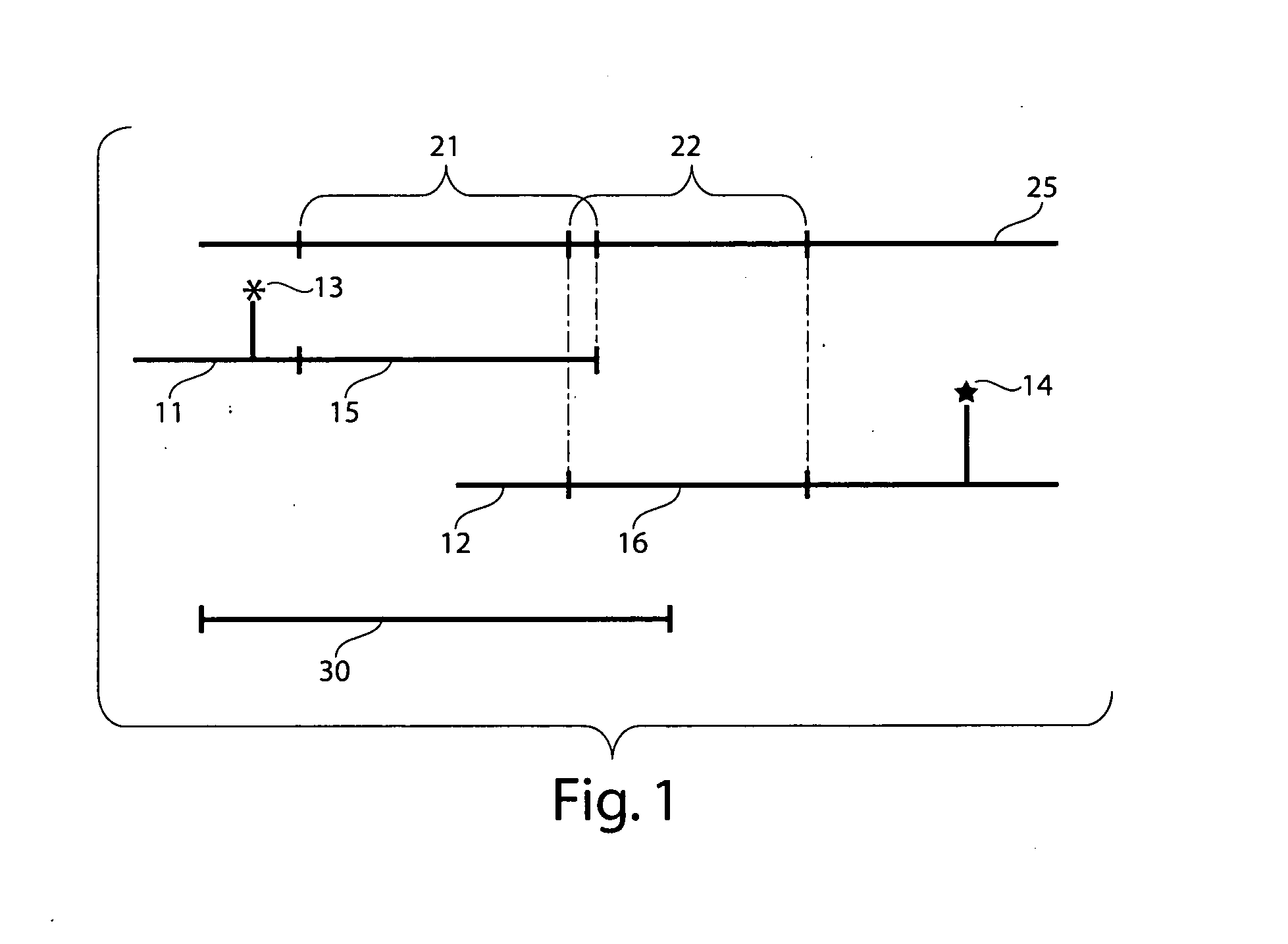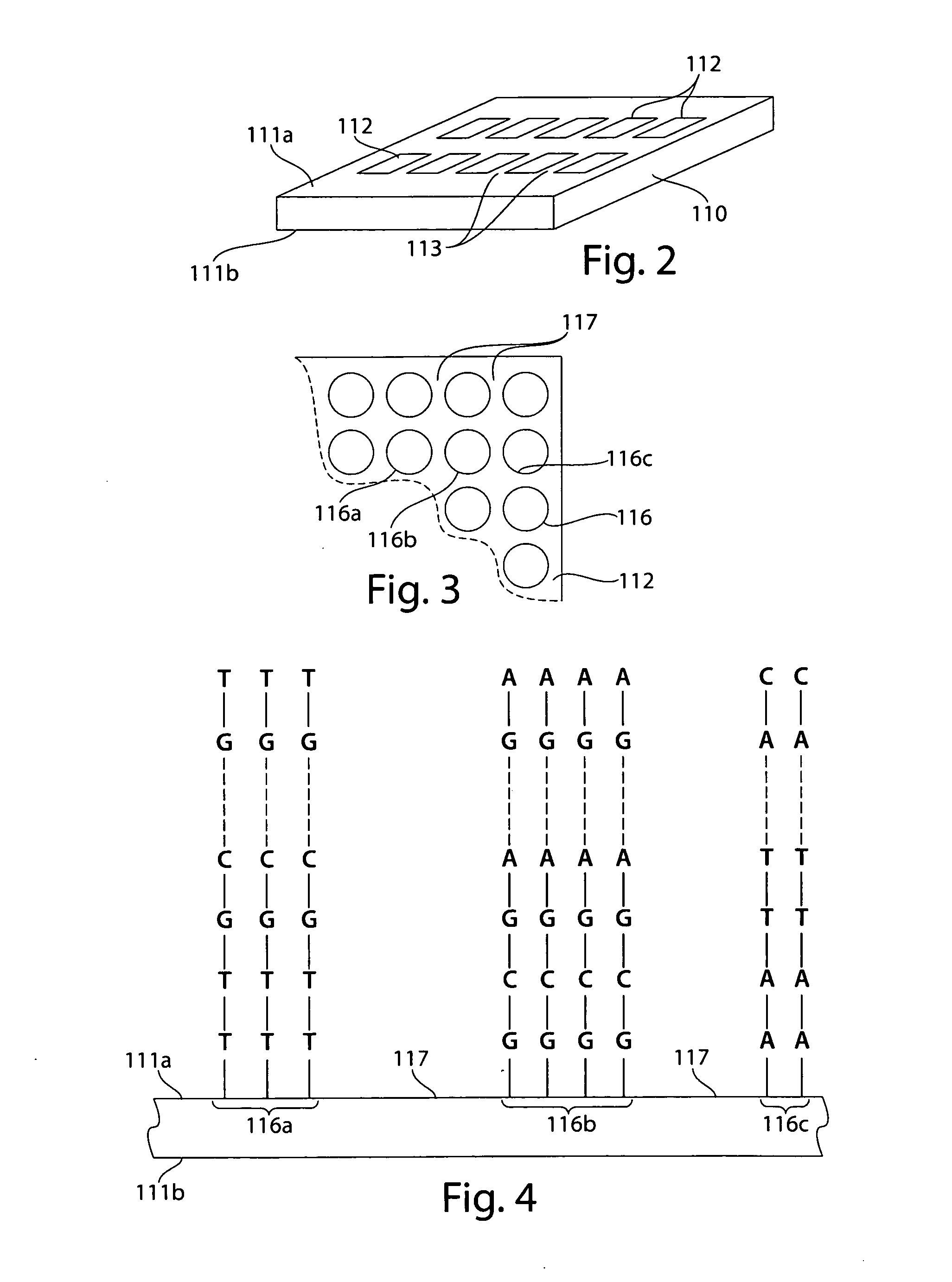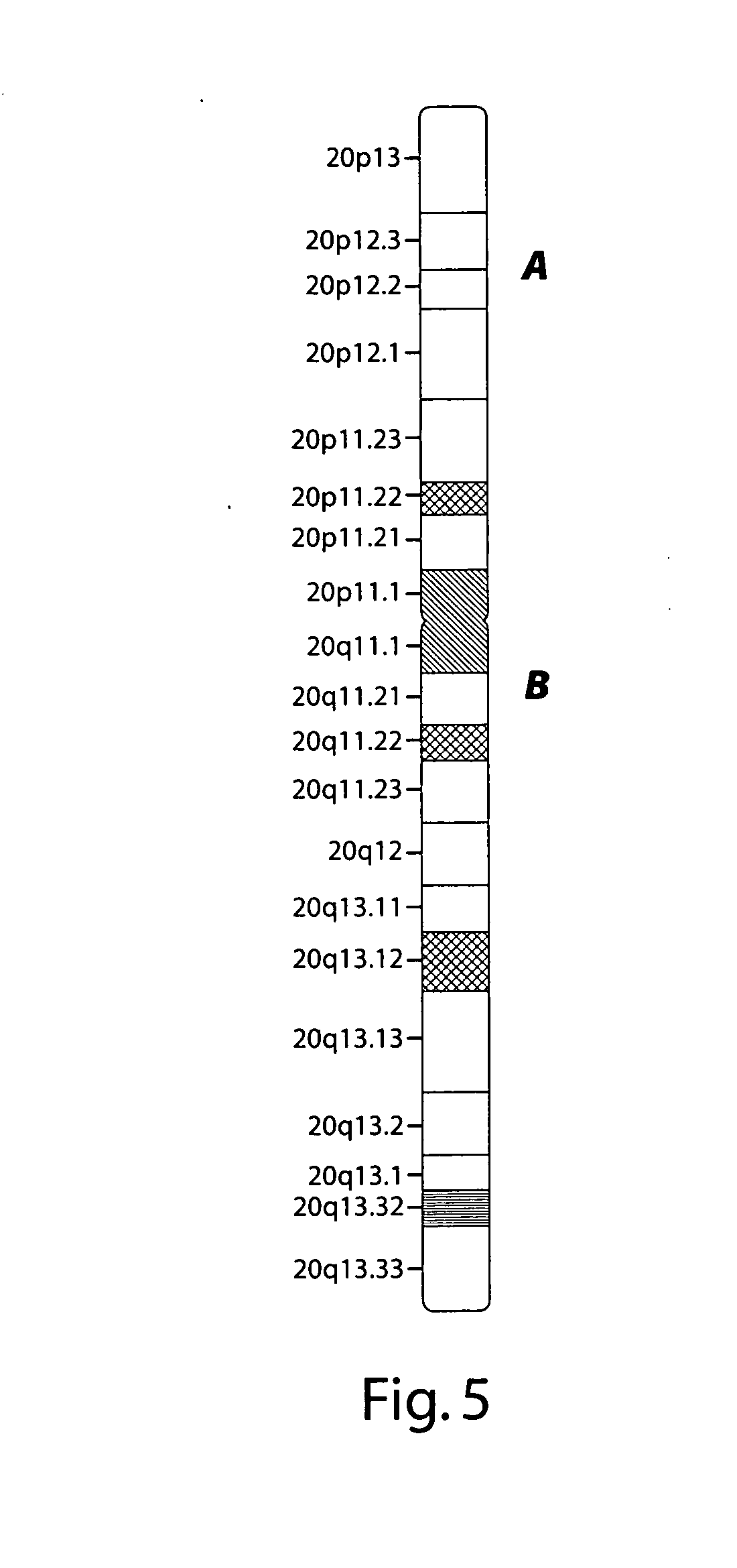High resolution chromosomal mapping
a chromosomal mapping and high-resolution technology, applied in the field of mapping and structural analysis of chromosomes and chromosomal rearrangements, can solve the problems of limited spatial resolution, low resolution of chromosome boundaries, and inability to accurately and reproducibly determine the boundaries of genomic structures
- Summary
- Abstract
- Description
- Claims
- Application Information
AI Technical Summary
Benefits of technology
Problems solved by technology
Method used
Image
Examples
example 1
[0135] This example illustrates one method of mapping the boundaries of a genomic structure, according to one embodiment of the invention.
[0136] Chromosome 20 has 20 cytogenetic G-bands (20p13-20q13.33), as shown schematically in FIG. 5. A series of design probes of pools of long oligonucleotides were prepared. For the “p” arm, each pool included unique genomic sequences within a cytoband. The 5′ and 3′ ends of cytoband-specific pool precisely defined by DNA sequence.
[0137] For the “q” arm, each pool included unique genomic sequences of <100 kb within a single G band (e.g. 20q12). The 5′ and 3′ ends of each sub-cytoband pool were precisely defined by DNA sequence.
[0138] The sequences within individual cytobands can be precisely synthesized as individual pools of long oligonucleotides. These can also be used to provide high resolution mapping of any genomic structures within these regions.
[0139] It will be appreciated that throughout the present application, that words such as “c...
PUM
| Property | Measurement | Unit |
|---|---|---|
| temperature | aaaaa | aaaaa |
| temperature | aaaaa | aaaaa |
| pH | aaaaa | aaaaa |
Abstract
Description
Claims
Application Information
 Login to View More
Login to View More - R&D
- Intellectual Property
- Life Sciences
- Materials
- Tech Scout
- Unparalleled Data Quality
- Higher Quality Content
- 60% Fewer Hallucinations
Browse by: Latest US Patents, China's latest patents, Technical Efficacy Thesaurus, Application Domain, Technology Topic, Popular Technical Reports.
© 2025 PatSnap. All rights reserved.Legal|Privacy policy|Modern Slavery Act Transparency Statement|Sitemap|About US| Contact US: help@patsnap.com



